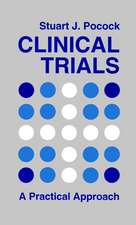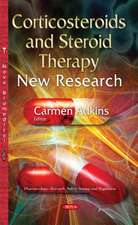Sister Chromatid Exchanges: 25 Years of Experimental Research Part B Genetic Toxicology and Human Studies: Basic Life Sciences, cartea 29
Editat de Raymond Ticeen Limba Engleză Paperback – 16 feb 2013
Din seria Basic Life Sciences
- 5%
 Preț: 378.07 lei
Preț: 378.07 lei - 15%
 Preț: 647.73 lei
Preț: 647.73 lei - 5%
 Preț: 383.55 lei
Preț: 383.55 lei - 15%
 Preț: 649.06 lei
Preț: 649.06 lei -
 Preț: 401.03 lei
Preț: 401.03 lei - 5%
 Preț: 730.71 lei
Preț: 730.71 lei - 5%
 Preț: 736.92 lei
Preț: 736.92 lei - 5%
 Preț: 726.68 lei
Preț: 726.68 lei - 5%
 Preț: 729.26 lei
Preț: 729.26 lei - 18%
 Preț: 960.61 lei
Preț: 960.61 lei - 5%
 Preț: 375.85 lei
Preț: 375.85 lei - 5%
 Preț: 744.05 lei
Preț: 744.05 lei - 5%
 Preț: 740.58 lei
Preț: 740.58 lei - 5%
 Preț: 733.82 lei
Preț: 733.82 lei - 5%
 Preț: 719.38 lei
Preț: 719.38 lei -
 Preț: 397.59 lei
Preț: 397.59 lei - 5%
 Preț: 390.85 lei
Preț: 390.85 lei - 15%
 Preț: 657.57 lei
Preț: 657.57 lei - 5%
 Preț: 382.99 lei
Preț: 382.99 lei - 5%
 Preț: 400.56 lei
Preț: 400.56 lei - 5%
 Preț: 739.69 lei
Preț: 739.69 lei - 15%
 Preț: 657.25 lei
Preț: 657.25 lei - 18%
 Preț: 959.67 lei
Preț: 959.67 lei -
 Preț: 401.24 lei
Preț: 401.24 lei - 15%
 Preț: 658.88 lei
Preț: 658.88 lei - 5%
 Preț: 376.95 lei
Preț: 376.95 lei - 5%
 Preț: 768.39 lei
Preț: 768.39 lei - 5%
 Preț: 735.83 lei
Preț: 735.83 lei - 15%
 Preț: 651.19 lei
Preț: 651.19 lei - 18%
 Preț: 1228.47 lei
Preț: 1228.47 lei - 15%
 Preț: 595.36 lei
Preț: 595.36 lei - 5%
 Preț: 736.39 lei
Preț: 736.39 lei - 5%
 Preț: 730.55 lei
Preț: 730.55 lei - 18%
 Preț: 960.30 lei
Preț: 960.30 lei - 5%
 Preț: 738.93 lei
Preț: 738.93 lei - 15%
 Preț: 662.16 lei
Preț: 662.16 lei - 15%
 Preț: 663.60 lei
Preț: 663.60 lei -
 Preț: 395.25 lei
Preț: 395.25 lei - 5%
 Preț: 739.13 lei
Preț: 739.13 lei - 15%
 Preț: 639.59 lei
Preț: 639.59 lei - 5%
 Preț: 377.52 lei
Preț: 377.52 lei - 5%
 Preț: 721.40 lei
Preț: 721.40 lei - 18%
 Preț: 1241.10 lei
Preț: 1241.10 lei - 18%
 Preț: 1233.69 lei
Preț: 1233.69 lei
Preț: 387.39 lei
Preț vechi: 407.78 lei
-5% Nou
Puncte Express: 581
Preț estimativ în valută:
74.14€ • 80.50$ • 62.27£
74.14€ • 80.50$ • 62.27£
Carte tipărită la comandă
Livrare economică 22 aprilie-06 mai
Preluare comenzi: 021 569.72.76
Specificații
ISBN-13: 9781468448948
ISBN-10: 1468448943
Pagini: 560
Ilustrații: XVII, 1033 p.
Dimensiuni: 170 x 244 x 29 mm
Greutate: 0.88 kg
Ediția:Softcover reprint of the original 1st ed. 1984
Editura: Springer Us
Colecția Springer
Seria Basic Life Sciences
Locul publicării:New York, NY, United States
ISBN-10: 1468448943
Pagini: 560
Ilustrații: XVII, 1033 p.
Dimensiuni: 170 x 244 x 29 mm
Greutate: 0.88 kg
Ediția:Softcover reprint of the original 1st ed. 1984
Editura: Springer Us
Colecția Springer
Seria Basic Life Sciences
Locul publicării:New York, NY, United States
Public țintă
ResearchCuprins
of Part B.- Sce and Genetic Toxicology.- Sister Chromatid Exchange Analysis in Cultured Peripheral Blood Leukocytes of the Coldwater Marine Fish, Pacific Staghorn Sculpin (Leptocottus armatus): A Feasible System for Assessing Genotoxic Marine Pollutants.- SCE Studies in the Chick Embryo and Neonate: Actions of Mutagens in a Developing System.- SCE Induction by Indirect Mutagens/Carcinogens in Metabolically Active Cultured Mammalian Cell Lines.- Erythrocyte-Mediated Metabolic Activation Detected by SCE.- The Effect of Erythrocytes and Hemoglobin on Sister Chromatid Exchange Induction in Cultured Human Lymphocytes Exposed to Aniline HC1.- Development of Rodent Peripheral Blood Lymphocyte Culture Systems to Detect Cytogenetic Damage In Vivo.- Accumulation of SCEs in Lymphocytes During Chronic Ingestion of a Mutagen.- Elimination of Cyclophosphamide-Induced SCE in Lymphocytes of Rats with Time Post-treatment.- Detection of SCE in Rodent Cells Using the Activated Charcoal Bromodeoxyuridine System.- Assessment of Sister Chromatid Exchange in Spermatogonia and Intestinal Epithelium in Chinese Hamsters.- Sister Chromatid Exchanges in Mammalian Meiotic Chromosomes.- Human Studies.- Removal and Persistence of SCE-Inducing Damage in Human Lymphocytes In Vitro.- Persistence of SCE-Inducing Lesions after GO Exposure of Human Lymphocytes to Differing Classes of DNA-Damaging Chemicals.- Proliferative Kinetics and Chemical-Induced Sister Chromatid Exchanges in Human Lymphocyte Cultures.- Importance of the Mitogen in Sister Chromatid Exchange Studies.- Serum-and Plasma-Dependent Variations of Benzo(a)pyrene-Induced Sister Chromatid Exchange in Human Lymphocytes.- Analysis of Sister Chromatid Exchanges in Bloom Syndrome by Use of Endomitotic and Three-Way Differentiation Procedures.- Complementation Studies in Murine/Human Hybrids Suggest Multiple Etiology for Increased Rate ot Sister Chromatid Exchange in Mammalian Cells.- Different Properties in Lymphoblastoid Cell Lines from Patients with Bloom Syndrome.- Study of Basal Cell Nevus Syndrome Fibroblasts after Treatment with DNA-Damaging Agents.- DNA Interstrand Cross-linking, Repair, and SCE Mechanisms in Human Cells in Special Reference to Fanconi’’s Anemia.- Human Health Situation and Chromosome Alterations: Sister Chromatid Exchange Frequency in Lymphocytes from Passive Smokers and Patients with Hereditary Diseases.- Sensitivities of Peripheral Lymphocytes from Healthy Humans and Cancer Patients to Induction of Sister Chromatid Exchanges by Genotoxicants.- Value and Significance of SCE in Human Leukemia and Cancer.- SCE and Cell Cycle Studies in Leukemia.- Sister Chromatid Exchange in Phytohemagglutinin-Stimulated Lymphocytes of Nonfamilial Cutaneous Malignant Melanoma Patients.- SCE Induction by Cytostatics and Its Relation to Iatrogenic Leukemogenesis.- Sister Chromatid Exchange Frequency and Cell Cycle Kinetics in Cancer Patients Treated with Cytostatic Drugs.- Monitoring Patients on Long-Term Drug Therapy for Genotoxic Effects.- Practical Applications of the SCE Studies for Guiding and Improving Chemotherapy.- Genotoxicity of Antiamebic, Anthelmintic, and Antimycotic Drugs in Human Lymphocytes.- Sister Chromatid Exchange Induction by Cigarette Smoke.- The SCE Test as a Tool for Cytogenetic Monitoring of Human Exposure to Occupational and Environmental Mutagens.- Sister Chromatid Exchanges in Workers Exposed to Low Doses of Styrene.- The Effects of Hypolipidemic Peroxisome Proliferators on the Induction of SCEs.- Ethylene Oxide and Some Factors Affecting the Mutagen Sensitivity of SCE inHumans.- General Discussion.- The Relevance of Sister Chromatid Exchange Studies to Public Health: Prevention and Intervention. Introduction to a General Discussion on the Interpretation of Sister Chromatid Exchange Data.- Summary of General Discussion.- List of Participants.










